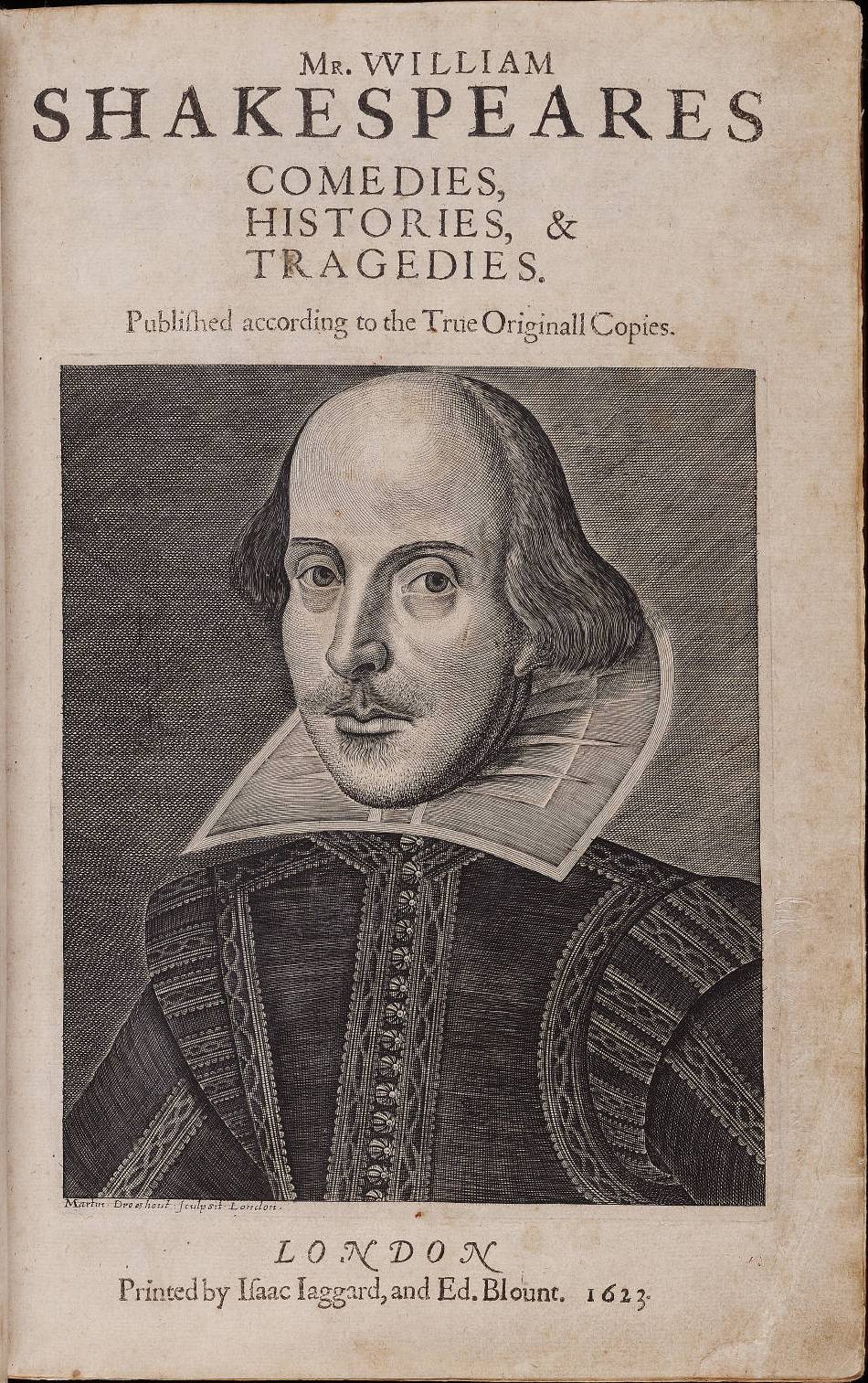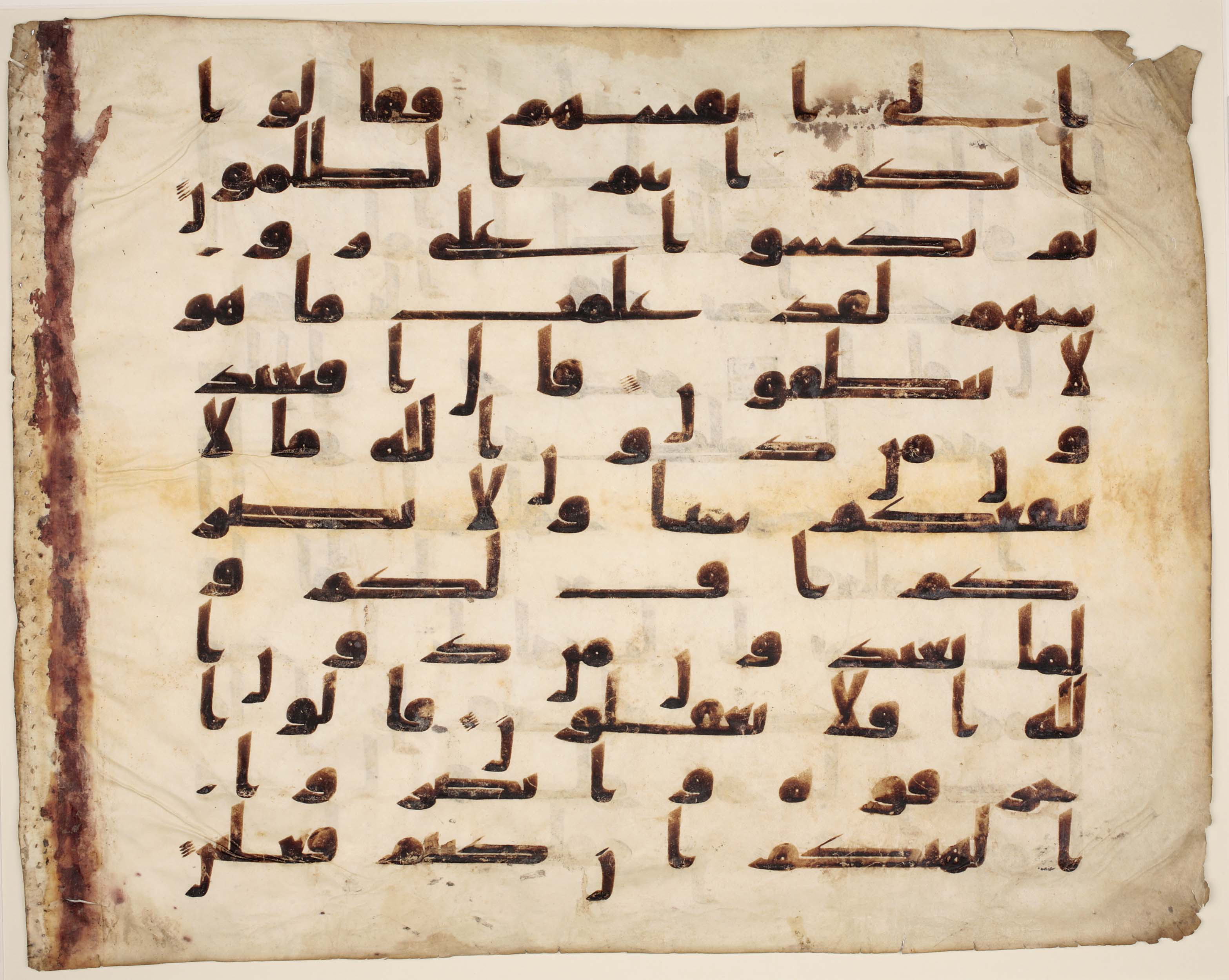Folio on:
[Wikipedia]
[Google]
[Amazon]

 The term "folio" (), has three interconnected but distinct meanings in the world of
The term "folio" (), has three interconnected but distinct meanings in the world of  Famous folios (in both senses) include the Gutenberg Bible, printed in about 1455, and the First Folio collected edition of Shakespeare's plays, printed in 1623; however, their actual size is rather different.
Famous folios (in both senses) include the Gutenberg Bible, printed in about 1455, and the First Folio collected edition of Shakespeare's plays, printed in 1623; however, their actual size is rather different.

 In the discussion of manuscripts, a folio means a leaf with two pages, the recto being the first the reader encounters, and the verso the second. In Western books, which are read by turning the pages over from right to left, when the book is begun with the open page edges at the reader's right, the first page to be seen is "folio 1 recto", typically abbreviated to "f1 r.". When this page is turned over "f1 v." is on the left and "f2 r." on the right of the "opening", or two pages that are visible. For books in Arabic, Hebrew, Japanese and other languages, where the book is begun from the back in Western terms, with the open page edges at the reader's left, the numbering also follows the sequence in which the reader encounters.
In the discussion of two-columned manuscripts, a/b/c/d can denote the left and right-hand columns of recto and verso pages (e.g. "f. 150a" and "f. 150b" are the left and right hand columns on the recto page, and "f. 150c" and "f. 150d" the left and right hand columns on the verso page). In the discussion of three-columned manuscripts, notation may make use of folio number + recto/verso + column a/b/c (e.g. "f. 3 v. col. c" references the third column on the verso side of the third folio).
In the discussion of manuscripts, a folio means a leaf with two pages, the recto being the first the reader encounters, and the verso the second. In Western books, which are read by turning the pages over from right to left, when the book is begun with the open page edges at the reader's right, the first page to be seen is "folio 1 recto", typically abbreviated to "f1 r.". When this page is turned over "f1 v." is on the left and "f2 r." on the right of the "opening", or two pages that are visible. For books in Arabic, Hebrew, Japanese and other languages, where the book is begun from the back in Western terms, with the open page edges at the reader's left, the numbering also follows the sequence in which the reader encounters.
In the discussion of two-columned manuscripts, a/b/c/d can denote the left and right-hand columns of recto and verso pages (e.g. "f. 150a" and "f. 150b" are the left and right hand columns on the recto page, and "f. 150c" and "f. 150d" the left and right hand columns on the verso page). In the discussion of three-columned manuscripts, notation may make use of folio number + recto/verso + column a/b/c (e.g. "f. 3 v. col. c" references the third column on the verso side of the third folio).

 The term "folio" (), has three interconnected but distinct meanings in the world of
The term "folio" (), has three interconnected but distinct meanings in the world of book
A book is a medium for recording information in the form of writing or images, typically composed of many pages (made of papyrus, parchment, vellum, or paper) bound together and protected by a cover. The technical term for this phys ...
s and printing
Printing is a process for mass reproducing text and images using a master form or template. The earliest non-paper products involving printing include cylinder seals and objects such as the Cyrus Cylinder and the Cylinders of Nabonidus. The ...
: first, it is a term for a common method of arranging sheets of paper into book form, folding the sheet only once, and a term for a book made in this way; second, it is a general term for a sheet, leaf or page in (especially) manuscript
A manuscript (abbreviated MS for singular and MSS for plural) was, traditionally, any document written by hand – or, once practical typewriters became available, typewritten – as opposed to mechanically printed or reproduced ...
s and old books; and third, it is an approximate term for the size of a book, and for a book of this size.
First, a folio (abbreviated fo or 2o) is a book or pamphlet made up of one or more full sheets of paper, on each of which four pages of text are printed, two on each side; each sheet is then folded once to produce two leaves. Each leaf of a folio book thus is one half the size of the original sheet. Ordinarily, additional printed folio sheets would be inserted inside one another to form a group or "gathering" of leaves prior to binding the book.
Second, folio is used in terms of page numbering for some books and most manuscript
A manuscript (abbreviated MS for singular and MSS for plural) was, traditionally, any document written by hand – or, once practical typewriters became available, typewritten – as opposed to mechanically printed or reproduced ...
s that are bound but without page numbers as an equivalent of "page" (both sides), "sheet" or "leaf", using "''recto''" and "''verso''" to designate the first and second sides, and (unlike the usage in printing) disregarding whether the leaf concerned is actually physically still joined with another leaf. This usually appears abbreviated: "f26r." means the first side of the 26th leaf in a book. This will be on the right hand side of the opening of any book composed in a script that is read from left-to-right, such as Latin
Latin (, or , ) is a classical language belonging to the Italic branch of the Indo-European languages. Latin was originally a dialect spoken in the lower Tiber area (then known as Latium) around present-day Rome, but through the power ...
(as used in English), Cyrillic, or Greek
Greek may refer to:
Greece
Anything of, from, or related to Greece, a country in Southern Europe:
*Greeks, an ethnic group.
*Greek language, a branch of the Indo-European language family.
**Proto-Greek language, the assumed last common ancestor ...
, and will be opposite for books composed in a script that is read from right-to-left, such as Hebrew
Hebrew (; ; ) is a Northwest Semitic language of the Afroasiatic language family. Historically, it is one of the spoken languages of the Israelites and their longest-surviving descendants, the Jews and Samaritans. It was largely preserved ...
and Arabic
Arabic (, ' ; , ' or ) is a Semitic language spoken primarily across the Arab world.Semitic languages: an international handbook / edited by Stefan Weninger; in collaboration with Geoffrey Khan, Michael P. Streck, Janet C. E.Watson; Walte ...
.
Third, folio is also used as an approximate term for a size of book, typically about tall, and as such does not necessarily indicate the actual printing format of the books, which may even be unknown as is the case for many modern books. Other common book formats are '' quarto'' and '' octavo'', which are both also printing formats, involving two and three folds in the sheet respectively.
Format
A folio (from Latin foliō, abl. of folium, leaf) is a book or pamphlet made up of one or more full sheets of paper, on each sheet of which four pages of text are printed, two on each side; each sheet is then folded one time to produce two leaves. Each leaf of a folio book thus is one half the size of the original sheet. This contrasts with a quarto, folding each sheet twice, and octavo, folding each sheet three times. Unlike the folio, these last, and further types involving more folds, require the pages of the book to be cut open after binding, which might be done mechanically by the printer, but in historic books was often left for the reader to do with a paper-knife. There are variations in how folios are produced. For example, bibliographers call a book printed as a folio (two leaves per full sheet), but bound in gatherings of 8 leaves each, a "folio in 8s." The Gutenberg Bible was printed in about 1455 as a folio, in which four pages of text were printed on each sheet of paper, which were then folded once. The page size is 12 x 17.5 inches (307 x 445 mm), a "double folio" size. Several such folded conjugate pairs of leaves were inserted inside one another to produce the sections or gatherings, which were then sewn together to form the final book. Shakespeare's First Folio edition is printed as a folio and has a page height of 12.5 inches (320 mm), making it a rather small folio size. Folios were a common format of books printed in the incunabula period (books printed before 1501), although the earliest printed book, surviving only as a fragment of a leaf, is a quarto. TheBritish Library
The British Library is the national library of the United Kingdom and is one of the largest libraries in the world. It is estimated to contain between 170 and 200 million items from many countries. As a legal deposit library, the Briti ...
Incunabula Short Title Catalogue currently lists about 28,100 different editions of surviving books, pamphlets and broadsides (some fragmentary only) printed before 1501, of which about 8,600 are folios, representing just over 30 percent of all works in the catalogue.
Page numbering
Size
The actual size of a folio book depends on the size of the full sheet of paper on which it was printed, and in older periods these were not standardized, so the term's meaning is only approximate. Historically, printers used a range of names such as (with approximate maximum page height): Double Elephant Folio (50 inches, 127 cm), Atlas Folio (25 inches, ca 63 cm), Elephant Folio (23 inches, ca 58 cm), Royal Folio (20 inches, ca 51 cm), Medium Folio (18 inches, ca 46 cm), and (the most common) Crown Folio (15 inches, ca 38 cm). From the mid-nineteenth century, technology permitted the manufacture of large sheets or rolls of paper on which books were printed, many text pages at a time. As a result, it may be impossible to determine the actual format (i.e., number of leaves formed from each sheet fed into a press). The term "folio" as applied to such books may refer simply to the size, i.e., books that are approximately 15 inches (38 cm) tall.Shakespeare folios
From the earliest days of printing, folios were often used for expensive, prestigious volumes. In the seventeenth century, plays of the English Renaissance theatre were printed as collected editions in folio. Thirty-six of Shakespeare's plays, for example, were included in the First Folio collected edition of 1623, which was followed by additional folio editions, referred to as theSecond Folio
The Second Folio is the 1632 edition of the collected plays of William Shakespeare. It follows the First Folio of 1623. Much language was updated in the Second Folio and there are almost 1,700 changes.
The major partners in the First Folio had ...
, etc. Other playwrights in this period also published their plays in folio editions, such as Ben Jonson's collected works of 1616.
See further:
* English Renaissance theatre
* Early texts of Shakespeare's works
* False Folio
See also
* Bookbinding (includes detailed discussion of various book formats) * Book size * Octavo * QuartoReferences
{{Authority control Bookbinding Book formats Book publishing Printing terminology